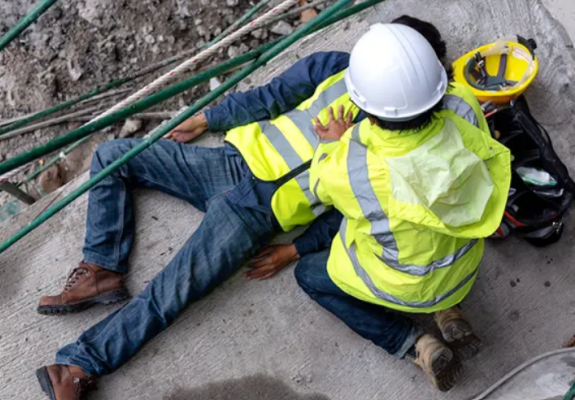EU Decarbonisation and Certification of Carbon-Neutral Agriculture
New Carbon Removals and Carbon Farming Certification Regulations
The latest report of the Intergovernmental Panel on Climate Change (IPCC) points to a reduction in the likelihood of limiting global warming to 1.5°C unless there are rapid reductions in greenhouse gas emissions. The report clearly states that "the development of carbon dioxide sequestration to offset residual emissions that are difficult to reduce is inevitable to achieve zero net greenhouse gas emissions". This means that the development of sustainable activities to capture carbon from the atmosphere and permanently store it in geological reservoirs, terrestrial and marine ecosystems or products is required.
The European Climate Law sets out that the EU should become climate neutral by 2050. This requires significant reductions in greenhouse gas emissions and the balancing of unavoidable emissions (otherwise residual) and removals within the EU by 2050 at the latest. To achieve this target, both natural ecosystems and industrial activities will have to contribute to the removal of several hundred million tonnes of greenhouse gases per year from the atmosphere. Currently and with current policies, the EU is not on track to meet these targets: in recent years carbon sinks in natural ecosystems have been declining and there are currently no significant industrial carbon sinks.
The concept of "climate neutrality" is based on balancing residual emissions with emission removals. This means that once all feasible emission reductions have been achieved, the remaining emissions are removed from the atmosphere through physical or technical processes. While this approach is fundamental to EU climate policy, the terms 'residual emissions' and 'emission removals' come with their own challenges.
Residual emissions are typically not well defined, either conceptually or quantitatively. The term has no consistent definition or application in the literature. For example, in some cases, residual emissions are vaguely described as emissions that "cannot" be eliminated, while in other references are made to economic and technical considerations. These estimates, however, are often not rigorously or scientifically defined, making them vulnerable to socio-economic influences.
The Commission's 2021 Communication on Sustainable Carbon Cycles stresses the importance of creating a business model that rewards land managers for carbon capturing with full respect for ecological principles (i.e. "Carbon Farming"), as well as creating an EU internal market for carbon capture, use, storage and transport through innovative technologies.
In this context and considering the importance of Carbon Removals as well as Carbon Farming in the management of residual emissions, the European Parliament voted in April a new Carbon Removals and Carbon Farming Certification (CRCF) Regulation. This regulatory framework is designed to enhance carbon sequestration and promote sustainable agricultural practices to mitigate residual emissions. Final approval by the Council is expected shortly.
The development of carbon dioxide sequestration to offset residual emissions that are difficult to reduce is inevitable to achieve zero net greenhouse gas emissions
Carbon removal refers to processes that capture and store carbon dioxide. These can be achieved through natural processes such as reforestation and soil carbon sequestration or through technological methods such as direct capture and storage in the air. Carbon farming involves agricultural practices designed to increase the amount of carbon stored in the soil. Techniques include cover cropping, no-till farming, and agroforestry. These methods not only sequester carbon but also enhance soil health and biodiversity, making agriculture more resilient to climate change.
Although it is very important the formulation of a legislative framework for the mechanisms of Carbon Removals and Carbon Farming, the new Regulation has some weak points. The CRCF does not set clear conditions on removals in relation to emissions reductions. Emissions reductions and carbon removals are fundamentally different processes. Carbon removals permanently take amounts of carbon out of the atmosphere, whereas emissions reductions prevent new emissions from entering the atmosphere.
In addition, the Regulation leaves the door wide open for carbon offsets by allowing polluters to use certificates as carbon credits, which can delay necessary emissions cuts. This goes against the principle that carbon removals should add to, not replace, direct efforts to reduce emissions. Consequently, there is a significant risk of greenwashing if the certification process is not stringent enough. There are no clear limits on how carbon removal certificates can be used, opening the door for corporate abuse.
In addition, ensuring that carbon removed from the atmosphere does not re-enter the atmosphere is not a key criterion in the CRCF definition of carbon removals. Factors such as changes in land use, climate impacts, and agricultural practices can reverse the carbon stored, leading to the release of carbon dioxide back into the atmosphere.
According to the 6th Intergovernmental Panel on Climate Change Assessment Report, global residual emissions stand at approximately 5 to 10% of current emissions, meaning the other 90 to 95% of current emissions can and must be eliminated. Climate action cannot be delayed through unnecessary offsetting. Carbon removals should add to, not replace, direct efforts to reduce emissions. The economy needs to rapidly and drastically cut greenhouse gas emissions as a priority and prevent the likely “deterrence effect” from investing in removals.






